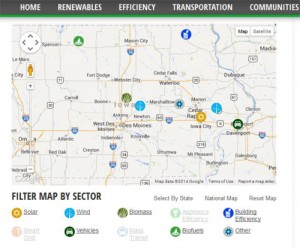CLICK HERE for the latest market quotes from the Iowa Agribusiness Network!
CLICK HERE for the latest market quotes from the Brownfield Ag News Network!
CLICK HERE for the latest market quotes from the Iowa Agribusiness Network!
CLICK HERE for the latest market quotes from the Brownfield Ag News Network!
Women in Southwest Iowa are invited to a day of fun, learning and friendship during the annual Boots to Heels Conference on Saturday, April 12th. The conference runs from 8:00 am to 3:00 pm at the Cass County Community Center in Atlantic. Organizers say a dynamic lineup of speakers are scheduled for the one-day conference, to focus on the interests of women living and working in rural Iowa.
Kate Olson, program coordinator with Cass County ISU Extensio, says this is an event for any woman who wants to have fun and learn about farm related topics and plenty of other topics for ladies who do not have a farm background. Currently scheduled speakers include Kris Boettger, owner of Barn Happy, a restored old barn near Cedar Falls that features all Iowa made products, as the keynote speaker to start off the conference. Boettger will encourage attendees to know themselves, find balance in their lives and serve out their strengths in a session titled “Living and Giving Your Best.”
Brandi Eckles, owner of Lou Lou’s clothing store in Atlantic, will discuss fashion trends and share tips for mixing and matching the newest trend pieces in her session “3 outfits 9 ways” during the lunch hour. Additional breakout sessions include some favorite speakers and topics from years past. Breakout topics range from fitness to food and wine pairing, and farmland leasing to arm-knitting a scarf! Favorite presenters from previous conferences include Kate Kohorst, Dawn Rice and Aubrey Stuart. A few new speakers also join the lineup to share their expertise with conference attendees.
A full list of breakout sessions and descriptions is available on the Cass County Extension website at www.extension.iastate.edu. Registration for the entire day, which includes all sessions, a continental breakfast, lunch, dessert and materials, is just $30. Registration forms with a full schedule are available at the Cass County Extension office and other local supporting businesses, or can be printed at the Cass County Extension Website www.extension.iastate.edu/cass.
A federal report finds fewer hogs are being brought to market nationwide and in Iowa, which is the country’s number-one hog producing state. Gerry Bange, chairman of the U-S-D-A’s Outlook Board, says hog slaughter rates may be down due to the spread of a virus that’s striking hog lots. “Packers are out there looking for the hogs and they’re having difficulty so that could be leading to the bid-up in prices,” Bange says. “One thing’s for sure, even with the bid-up in prices, the hogs are not coming forth and that suggests a problem there and it may, in fact, be reflecting this virus situation.”
A year ago, the porcine epidemic diarrhea virus or P-E-D-V was reported in hogs in one state. Now it’s in 26 states, including Iowa. With the hog numbers dropping, Bange says the demand and the prices are rising. “The price is $67.13 per hundred-weight for 2014, that would be an increase of nearly 5% from the $64.05 recorded last year and about 7% higher than our previous forecast,” Bange says. “Given the strong demand and the tight supply, we’re looking at a pretty strong price.”
The U-S-D-A report finds some beef producers are sending their herds to market sooner, but production numbers for beef are also dropping, down about four-percent from last year, which is driving up prices and demand. Bange says prices will continue to climb and another six-dollars was added per hundred-weight to the latest forecast.
Bange says, “That’s a very, very sharp increase for any given month and reflects the strong prices we’ve seen to date which really reflects the very good demand we’re still seeing and the very, very tight supply.”
The U-S-D-A is forecasting the average steer price at $142-plus per hundred-weight, up 13-percent from last year. Reasons for the drop in cattle production include: the drought in the West, dry conditions in the southern Plains, and the severe just-ended winter in the North.
(Radio Iowa)
Shelby County Emergency Management Coordinator Bob Seivert says as spring cleaning time nears, and you go about cleaning up the yard and sprucing up your buildings, pay close attention to your address marker. It should be bright and clearly visible from the road. Emergency Responders, especially at night, depend on highly visible house numbers, street signs and rural address markers to properly locate you. 911 dispatchers will confirm your location based on your address and map location.
If you question where your house number should be posted, please check with local city authorities. For rural residents, the marker belongs alongside your lane in the fence row. If the fence line is far from the main road, place the marker out of the right of way close enough so that emergency responders can see it.
If your Shelby County rural 911 address marker has been damaged, lost or otherwise is not readable, please call the Shelby County Emergency Management Agency at 712-755-2124. There is no cost for replacement address markers.
This week’s “Fire Danger” index has been moved to the “High” category this week, in Shelby County. Emergency Management Coordinator Bob Seivert says the risk of controlled burn spreading beyond their intended scope is increasing due to the sunny and windy conditions expected Tuesday and Wednesday. 
Seivert asks residents of Shelby County to please remember to contact the EMA at 712-755-2124 and your local fire Chief to report your controlled burn prior to starting any fires.
URBANDALE, Iowa – As the Iowa job market continues to bounce back slowly from the depths of the economic downturn, one industry that’s leading the way is clean energy. The state ranked fifth in the nation in the fourth quarter with 650 new jobs announced in such areas as wind energy, biofuels, and recycling. Among those hoping that trend will continue is Mark Schroder, who runs LED Source of Urbandale. 
“We are a LED-lighting-retrofit company,” he said. “We do some new construction, but a majority of our business is retrofitting existing business owners. And we’re certainly trying to do our part to hire more people and do what we can to keep the economy in Iowa turning.” Schroder said some of his customers are also hiring more staff, thanks to the savings from moving to more-energy-efficient lighting.
The growth in clean energy jobs is not only helping economically, but is also promoted as providing environmental benefits like curbing climate change. That’s been helped in recent years in Iowa and across the country with the availability of certain tax credits, but Schroder noted that most of those now have been changed dramatically or eliminated altogether. “And in fact we’ve had a few customers tell us that they were going to put their projects on hold due to that particular situation, so we’d certainly like to see that legislation come back,” he said. “And it certainly would help not only our business, but many other businesses as well.”
Nationwide, nearly 80,000 clean-energy and clean-transportation jobs were announced in 2013, based on more than 260 projects tracked by the nonpartisan business group Environmental Entrepreneurs (E2).
Iowa clean energy jobs information is at CleanEnergyWorksForUs.org.
(Iowa News Service)
The U.S. Department of Agriculture’s (USDA) Farm Service Agency (FSA) Administrator Juan M. Garcia today recommended that farmers and ranchers who plan to participate in FSA programs register in advance. Producers are encouraged to report farm records and business structure changes to a local FSA Service Center before April 15, 2014.
Enrollment for the disaster programs authorized by the 2014 Farm Bill, including the Livestock Indemnity Program (LIP) and the Livestock Forage Disaster Program (LFP) will begin by April 15, 2014. “We expect significant interest in these programs,” said Garcia. “Early registration should help improve the sign-up process and allow us to expedite implementation of the programs. I strongly encourage producers to complete their paperwork ahead of time.”
Examples of updates or changes to report include:
• New producers or producers who have not reported farm records to FSA.
• Producers who have recently bought, sold or rented land. Those producers need to ensure that changes have been reported and properly recorded by local FSA county office personnel. Reports of purchased or sold property should include a copy of the land deed, and if land has been leased, then documentation should be provided that indicates the producer had/has control of the acreage.
• Producers that have changed business structures (e.g. formed a partnership or LLC) need to ensure that these relationships and shares are properly recorded with FSA. Even family farms that have records on file may want to ensure that this is recorded accurately as it may impact payment limits.
Farm records can be updated during business hours at FSA Service Centers that administer the county where the farm or ranch is located. Producers can contact their local FSA Service Center in advance to find out what paperwork they may need. In addition, bank account information should be supplied or updated if necessary to ensure that producers receive payments as quickly as possible through direct deposit.
While any producer may report farm records and business structure changes, it is especially important for producers who suffered livestock, livestock grazing, honeybee, farm-raised fish, or tree/vine losses for 2011, 2012, 2013 or 2014, and may be eligible for assistance through one of the four disaster programs.
For further information about our disaster programs and USDA’s Farm Bill implementation plan, visit FSA’s 2014 Farm Bill Web page. FSA Service Center locations can be found on the FSA website.
LINCOLN, Neb. (AP) — Researchers say bugs are developing resistance to the widely popular genetically engineered corn plants that make their own insecticide, so farmers may have to make changes. The Lincoln Journal Star reports (http://bit.ly/1eC05SM ) that cases of rootworms eating roots of so-called Bt corn have been confirmed in Nebraska, Iowa, Illinois, South Dakota and Minnesota.
Iowa State University researchers say rootworms have developed resistance to two of the four genetic traits in corn plants that are engineered to kill rootworms. Iowa State professor Aaron Gassmann says the problem isn’t widespread yet, but farmers and seed companies should consider changing their approaches to pest control.
In areas where Bt corn has failed to control rootworms, farmers turned to insecticides. The USDA says 76 percent of all corn planted last year was Bt corn.
DES MOINES, Iowa (AP) — Agricultural interest in using unmanned drones to help monitor millions of acres of crops is growing. The Des Moines Register reports that supporters believe using drones on farms makes sense because the operations are generally large and in rural areas. The Association for Unmanned Vehicle Systems International predicts that 80 percent of the commercial use of drones will eventually be in agriculture.
Drones with infrared cameras and other sensors can help identify insect problems and watering issues early. They can also help assess crop yields and locate missing cattle. Farmer Brent Johnson bought a drone last year to study how the topography of his 900-acre central Iowa farm affects yields. He says using the drone helps him decide whether to replant an area or avoid it in the future.